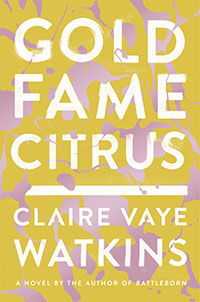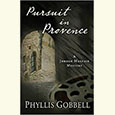The Wasted West
Claire Vaye Watkins’s sun-stroked debut novel is a dystopian conception of California after the water runs out
The Amargosa, “a vast tooth-colored superdune in the forgotten crook of the wasted West,” is the unlikely beating heart of Claire Vaye Watkins’s debut novel, Gold Fame Citrus. Set in the somewhat-near future, after dire real-life predictions of western drought have come to pass, the drought—along with its geographical manifestation, the Amargosa—has effectively severed the Southwest from the rest of the U.S. and spawned a new underclass, complete with its own derogatory nickname: the “Mojavs” are desert-dwellers who, thanks to a complete lack of water, are now considered a drain on the rest of the country’s resources.
 Most Mojavs have already left. Those who didn’t make an early escape to a more inhabitable part of the country have been transported as refugees to camps in other regions. But others simply stayed. Two of the holdouts, Ray and Luz, are squatting in an abandoned mansion in the canyons near Los Angeles. Luz, California native, was a model in her last life and a literal poster child for conservation in the life before that. On the day she was born, Watkins writes, Luz Dunn was “adopted and co-opted by Conservation and its enemies, her milestones announced in press releases, her life literal and symbolic the stuff of headlines, her baby book lousy with newspaper clippings: BABY DUNN STARTS KINDERGARTEN TODAY WITHOUT GREEN FIELDS TO PLAY IN…. LAST CENTRAL VALLEY FARM SUCCUMBS TO SALT: BABY DUNN, 18, NEVER AGAIN TO TASTE CALIFORNIA PRODUCE…. Random, how she became the goddesshead of a land whose rape was in full swing before she was even born. Baby Dunn.”
Most Mojavs have already left. Those who didn’t make an early escape to a more inhabitable part of the country have been transported as refugees to camps in other regions. But others simply stayed. Two of the holdouts, Ray and Luz, are squatting in an abandoned mansion in the canyons near Los Angeles. Luz, California native, was a model in her last life and a literal poster child for conservation in the life before that. On the day she was born, Watkins writes, Luz Dunn was “adopted and co-opted by Conservation and its enemies, her milestones announced in press releases, her life literal and symbolic the stuff of headlines, her baby book lousy with newspaper clippings: BABY DUNN STARTS KINDERGARTEN TODAY WITHOUT GREEN FIELDS TO PLAY IN…. LAST CENTRAL VALLEY FARM SUCCUMBS TO SALT: BABY DUNN, 18, NEVER AGAIN TO TASTE CALIFORNIA PRODUCE…. Random, how she became the goddesshead of a land whose rape was in full swing before she was even born. Baby Dunn.”
Ray was a soldier in the “forever wars,” nonspecific post-9/11-style conflicts in parts of the world far enough away to cauterize war’s horror for most U.S. citizens. Returning to the U.S. via the Pacific coast, “Ray had the blazing prophet eyes of John Muir,” Watkins writes, “and like John Muir, war had left him nerve-shaken and lean as a crow. He said the ocean had restored him.”
Ray and Luz spend their days futzing around a starlet’s abandoned mansion, managing their hydration with cola rations and mid-day naps. There is absolutely nothing to do with their time aside from this forced leisure—Watkins’s commentary, perhaps, on California as it is mythologized. “California people are quitters,” Ray jokes on the day he and Luz meet. “Your people came here looking for something better. Gold, fame, citrus. Mirage. They were feckless, yeah? Schemers. That’s why no one wants them now. Mojavs.”
On an excursion into the city, Ray and Luz are accosted by a child of around two, odd in appearance and behavior, who doesn’t appear to have parents but is attached to a dangerous-looking group of young people. Luz is seized by an instant affection for the child as well as an immediate unease about her apparent guardians. Their day in L.A. ends with an abduction that feels more like a rescue—they flee back to the canyon with the child, whom they dub “Ig.”
 Caring for Ig injects their lives with a potent shot of purpose, and a concurrent dose of anxiety. “There were never so many hazards in the world as there were today,” Luz thinks. “Love made you see them all.” They seek out their estranged friends, Lonnie and Rita, who grudgingly help them formulate a plan to leave L.A. with the child they fear someone will eventually come for, the child who has quickly become the blinding focal point of their formerly rudderless lives. They plan to drive to Utah, where they will meet a man who can help them all the way to Savannah, Georgia. But bisecting their path is the Amargosa.
Caring for Ig injects their lives with a potent shot of purpose, and a concurrent dose of anxiety. “There were never so many hazards in the world as there were today,” Luz thinks. “Love made you see them all.” They seek out their estranged friends, Lonnie and Rita, who grudgingly help them formulate a plan to leave L.A. with the child they fear someone will eventually come for, the child who has quickly become the blinding focal point of their formerly rudderless lives. They plan to drive to Utah, where they will meet a man who can help them all the way to Savannah, Georgia. But bisecting their path is the Amargosa.
Watkins describes the unlikely story and breathtaking geography of the Amargosa in stunning, near-psychedelic detail. A “five-hundred-year wind,” Watkins writes, had met historic drought conditions and begun forming a superdune of unimaginable scale. Despite the countless varied efforts of citizens, scientists, and government to quell the dune’s growth, “still came the wind, hoarding sand and superlatives: widest dune in North America, tallest dune in North America, largest dune in the Western Hemisphere. The dune field overtook I-15 in a weekend, reaching a corpulent four hundred square miles, insisting upon its reclassification from dune field to dune sea. Still rose the dune sea, and like a sea now making its own weather.” The Amargosa is not only vast and threatening and completely uncharted but also rumored to be in possession of its own life-force. Urban legends of colonies within the Amargosa’s bounds are nurtured by the many eyewitnesses who attribute to it a “curious energy. It was chemical, pheromonal, elemental, a tingle in the ions of the brain, a tug in the iron of the blood.”
As Luz, Ray, and Ig unwittingly meet the Amargosa, their story takes a turn that is tragic, mystical, and surreal. Told in language as blistered and sun-punished as the world it describes, Gold Fame Citrus is a gorgeous novel of disorienting vibrancy, at once lyrically descriptive and as focused as a heat-seeking missile. Its wildly evocative prose continually refines Watkins’s fever-dreamed vision of life after the water dries up.

Kathryn Justice Leache is a freelance writer who lives with her family in her hometown of Memphis. Her life among books has included work as a librarian and stints as a bookseller at Square Books in Oxford, Mississippi, and The Booksellers at Laurelwood in Memphis.


